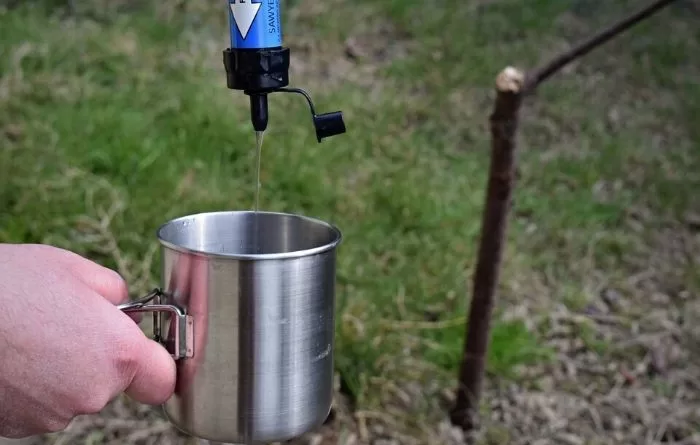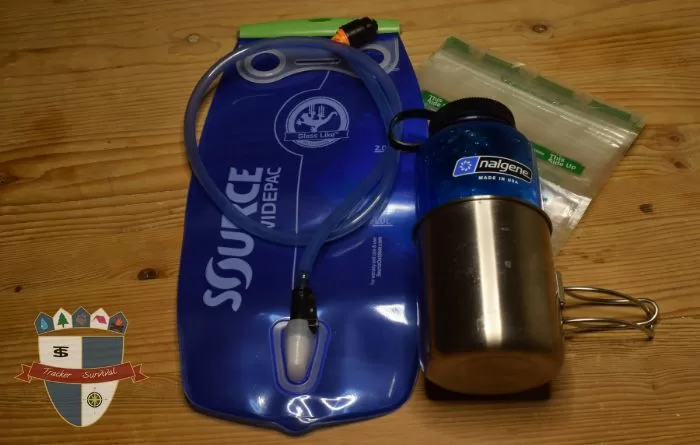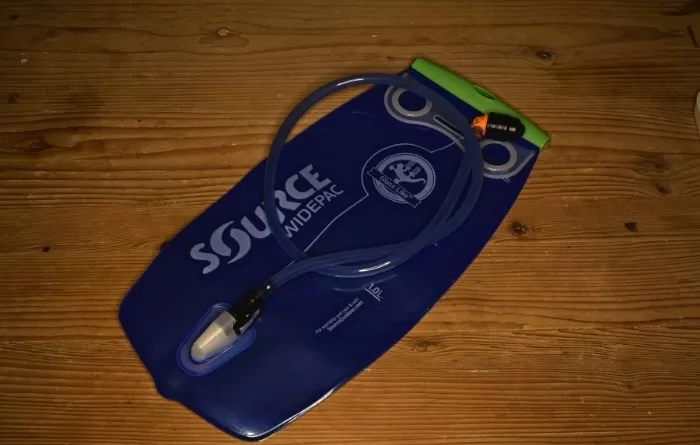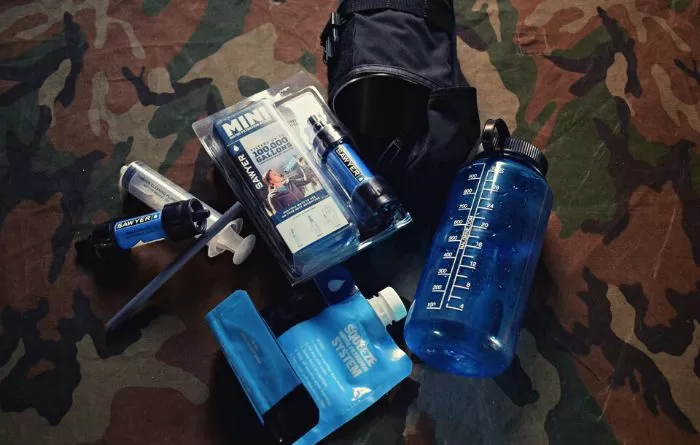Best Survival Water Container
The Survival Rule of 3s states that a person can survive 3 days without water. Clean potable water is a priority. The best survival water container has to be versatile. It has to be watertight, it should be able to be used as a method of boiling water or food (soups/stews). The container needs to be durable and able to handle getting banged around or even dropped.
Water Is Critical In A Survival Situation
Water is a resource that is taken for granted, turn on a tap and there it is clean potable water. But what happens if one day, the taps run dry? Preppers are prepared for this eventuality and have a large store of water. Often 100s of gallons worth. Which is easy enough to do when bugging in.
“A well-prepared home should have a method of collecting, purifying, and storing water. “
When bugging out, there is only so much water a person can carry with them. The solution is simple, carry a small amount of water and have the means available to collect and purify 100s of gallons of water.

The Best Survival Water Container
Various containers can be used to carry water in a bug-out bag. Some are better than others. We are going to discuss the pros and cons of the most popular methods.

Bottled Water
It is better to pack 2 or 3 smaller bottles than 1 large one in a B.O.B. The optimal size would be 1 liter bottles. Try to find a brand with thicker bottles, some brands have thinner plastic than others. The empty bottles can also be used to disinfect water using the SODIS method (Solar Water Disinfection).
If you have 2 or more bottles, you can sacrifice an empty bottle to create a makeshift water filter.
Pros
Cheap
Lightweight
Readily available
Durable (relatively)
Cons
Cannot be used to boil water
Narrow mouth
Water Bottle
Sports water bottles are now so common that most people own one. When choosing a water bottle for a bug-out bag, make sure that it is BPA-free, has a wide mouth, and is durable (some brands tend to crack when dropped).
Pros
Lightweight
Durable
Cheap (relatively)
Cons
Cannot be used to boil water
Cannot be used to purify water using the SODIS method
Recommendation: Nalgene 32oz bottle, a vast number of companies make nesting cups for the Nalgene 32oz bottle.
Water Bladders
Popularized by the military, water bladders are now mainstream and commonly used by athletes. They deflate to practically a couple of sheets of plastic and can hold 1 to 3 liters of water. With tubing and a bite valve, it is possible to drink while on the move.
Pros
Compact
Lightweight
Holds a decent amount of liquid
Accessible while on the move
Cons
Costly
Fragile
Not versatile
Recommendation: Source 3l Widepack, cheap, durable, and lightweight.

Metal Bottle
There are 3 viable materials for a metal water survival container. Aluminum bottles are lightweight and cheap, but fragile compared to the other 2 alternatives. Titanium is a fantastic material for a water bottle, but it is expensive and most water bottle brands tend to make their titanium products very thin compared to stainless steel water bottles.
The top pick for the best survival water container is a stainless steel water bottle. They are more durable than aluminum and cheaper than titanium. Can be thrown over a campfire to purify water and used to cook soups and stews.
Pros
Can be used to boil water
Can be used to cook food depending on the size
Durable
Cons
Expensive
Heavy
Recommendation: Pathfinder 32oz stainless water bottle with nesting cup.
Back-up Survival Water Containers
2 is 1 and 1 is none, always have backup methods of carrying water. It is not necessary to fill them all up with water. But having the option of filling them up in areas where water is scarce, is just smart planning.
Collapsible Water Bottle
A cheaper version of a water bladder minus the drinking tube. Popular among hikers and backpack travelers.
Pros
Cheap
Lightweight
Compact
Cons
Fragile
Prone to punctures
Recommendation: Platypus 1l soft bottle
Zip-lock Bags
In a pinch, they can be used in much the same way as a collapsible water bottle, except they are not designed to be used as a water container, so extra care must be taken when carrying and handling them. “Only to be used as a water container in an emergency.”
Pros
Extremely cheap
Very compact
Cons
Not optimal as a water container
Fragile
Prone to leaking
Prone to bursting at the seams
How Much Water Should I Carry In A Bug-out Bag
3 days without water is generally accepted as how long a person can survive without water. But that number can vary dramatically depending on the environment, how active you are, your weight, and your medical condition (some medical conditions require a person drinks more fluids).
Optimally a bug-out bag should have 3 days’ worth of water. What is 3 days’ worth of water? That is debated by medical professionals. I am sure that everyone has heard of the 8 glasses of water a day. Which is a very basic guideline.
I carry 4x1L of water in my bug-out bag.
Conclusion:
If nothing else is available, then any container that can safely hold water can be used as a survival container. By safely, I mean that the container does not contaminate the water in such a way as to make it unfit for human consumption.
Water is critical to survival, plan appropriately. When packing a bug-out bag, have at least 2 ways of carrying and purifying water. Relying on just one container or purification method is foolish.

What I Use And Why:
I have a Nalgene 32oz bottle with a stainless steel nesting cup. A Source 3L water bladder, 5x1L Ziplock bags, and 4x1L generic water bottle. For purification, I carry a Sawyer Mini and Katadyn Micropur MP1. For other methods of how to purify water, check out this article “Water Purification In A Survival Situation“
OK, my logic behind this is, I check my B.O.B. every 6 months to change the items for the season. From warm weather to cold weather, when I change my warm weather clothes for cold weather clothes, I rotate my water, food, and meds. Bottled water usually has a sell-by date of 1 year.
A rotation every 6 months means I have (kinda) fresh water in my bug-out bag at all times. When I grab my bag, and decide that I need more space, I pour 3 of the bottled waters into my hydration bladder and the last bottle into the 32oz Nalgene bottle. I can then dispose of the empty bottles, or tie them to the outside of my bag until I can repurpose them (into cordage or a DIY sediment water filter).